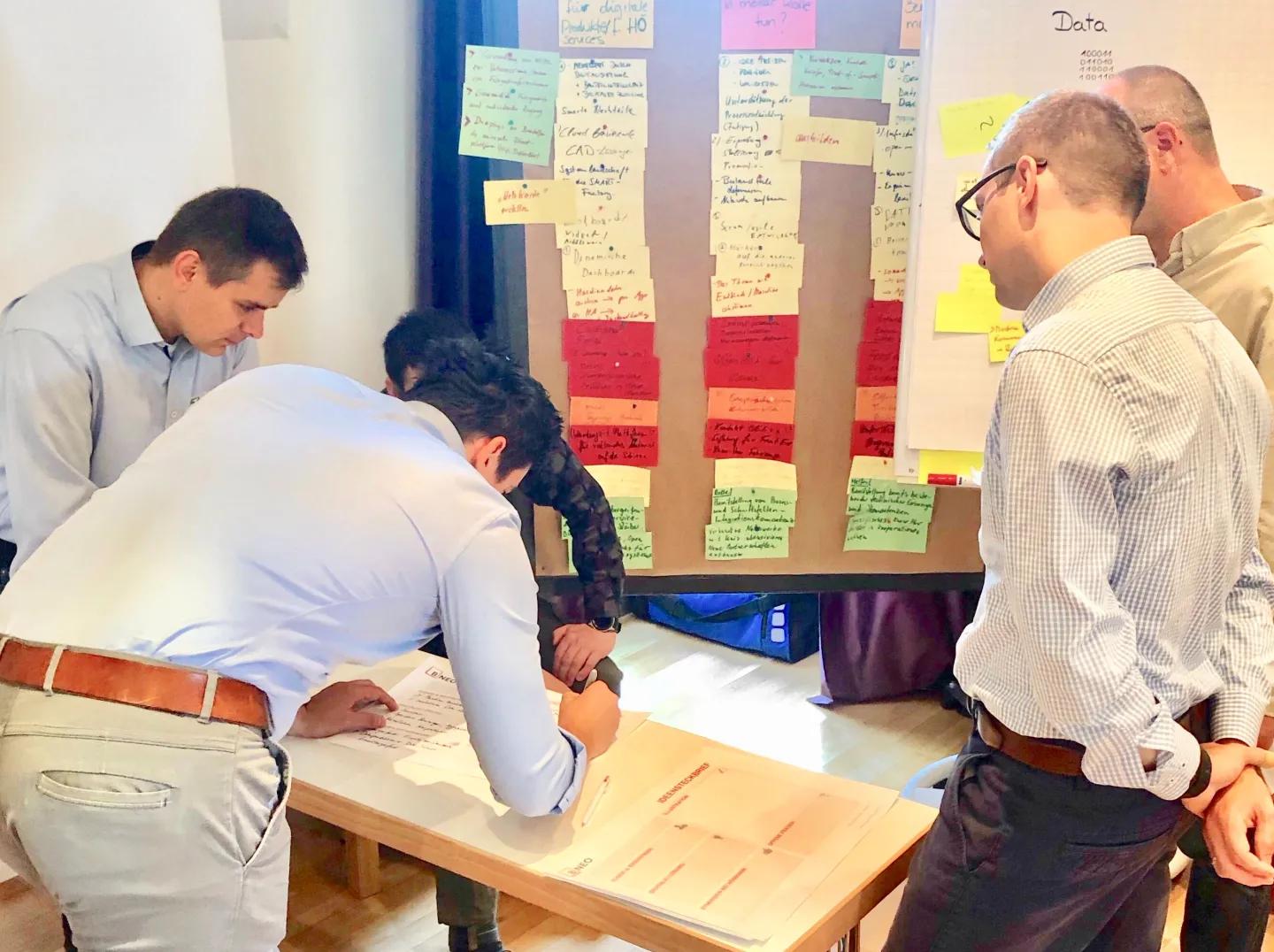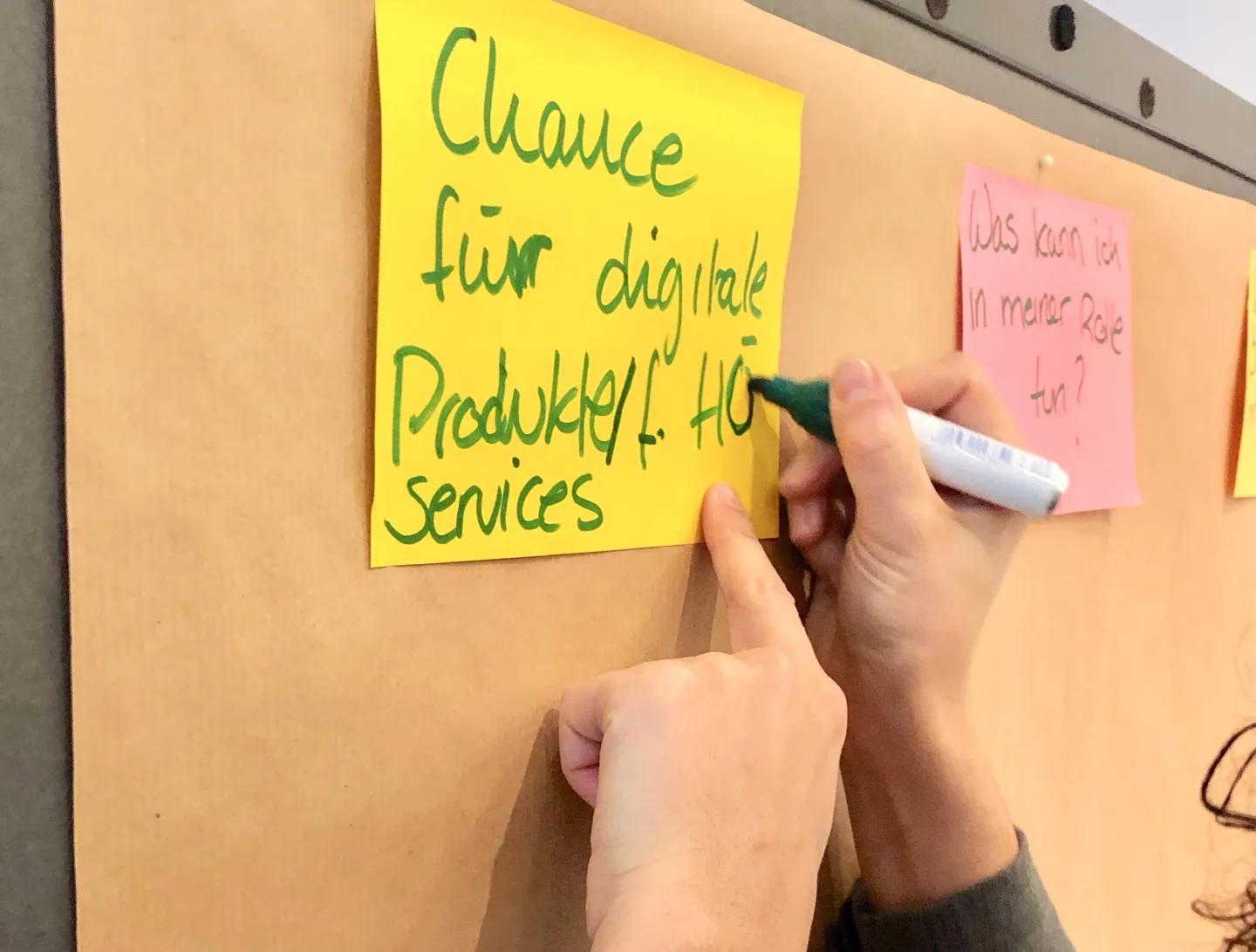Design thinking at HÖRMANN Digital
An article by Ulrich Kolzenburg (CCE Management) and Frank Urban (coach, trainer and consultant)
Design thinking is a systematic approach to complex problems in all areas of life. The problem-solving method is centred on the needs and preferences of users and customers. Those involved in a design-thinking process adopt the user's or customer's view of the problem, putting themselves in their shoes. They rigorously assess their modes of behaviour and processes.
Solutions and ideas are visualised and communicated as early as possible in the form of prototypes. This allows potential customers and users to test the prototype and give feedback before completion or market launch. In this way, design thinking generates practical results.
Design thinking in action
Based on various preliminary discussions on an operational basis and within the management team, specific examples were developed as to where the HÖRMANN Group could establish new business models and develop new products, thus creating new benefits for customers. The examples were intended to have the maturity level of a business plan.
To provide a broader basis for gathering ideas, innovation workshops were held with employees from the companies in the Engineering segment. These workshops were based on the design-thinking process.

The teams went through six phases:
- Empathy: The team defined the problem area.
- Observe: The participants made contact externally (in some cases virtually) and developed an understanding of/empathy with users and stakeholders.
- Define viewpoint: To define the viewpoint, the findings obtained were pooled and condensed.
- Ideate: The team developed a host of potential solutions in order to focus on specific topics.
- Develop prototypes: Prototyping helps to develop specific solutions that can be tested on the appropriate target groups.
- Test prototypes: At little expense, it should quickly become clear what ideas and prototypes are most relevant to people and the partner organisation. Each test gives the team new insights about users and prototypes. The team subsequently decides whether it wants to go back again in the process in order to improve the prototypes. Each iteration loop makes the prototypes more realistic, as they become more defined and functional as the level of detail increases.
In the workshops, the preferred ideas and prototypes were subjected to an initial assessment of economic efficiency. The participants used Business Model Canvas to produce this evaluation.

Results
As a result of the Group's headcount, it was possible to set up several teams who got to grips with the topic. The results obtained evolved into new products that have become available right across the HÖRMANN Group. The most visible example is the development of a software program for predictive maintenance in the systems that the subsidiaries make available to their customers and use in their own production plants.
In a mentoring system, HÖRMANN Logistik was on hand as a pilot user in order to support the concept through to market launch. The first customers are already working with the new product, which is known internally as “BugJack”.
Outlook
Based on HÖRMANN Logistik's results, the tool will also be used in other divisions. In addition, insights from product development will be directly applied to new, innovative products of the HÖRMANN Group companies.
With the design-thinking approach, the HÖRMANN Group has taken a major step towards modern, customer-oriented solutions. In the newly established company HÖRMANN Digital, it has become a key element in approaching further innovations.

About the authors:
Ulrich Kolzenburg (CCE Management) is one of the few non sector-dependent, internationally operating providers of R&D interim management. He specialises in processes relating to the product lifecycle, e.g. innovation and development management, series production transition, production and production optimisations/relocations. Depending on the task involved, he performs line management, project management or advisory functions. In this particular project, he set up interdisciplinary development for the HÖRMANN Group.
As a coach, trainer and consultant, Frank Urban's guiding principle is: “Getting people and myself moving – mentally and physically.” He designed and moderated the kick-off workshop in this project.